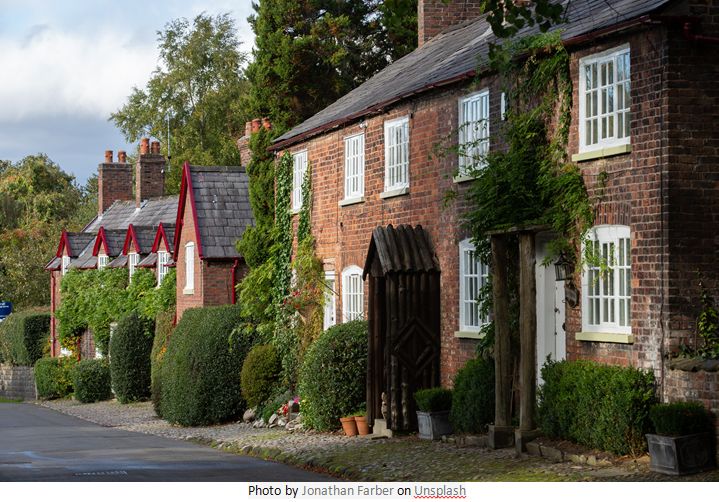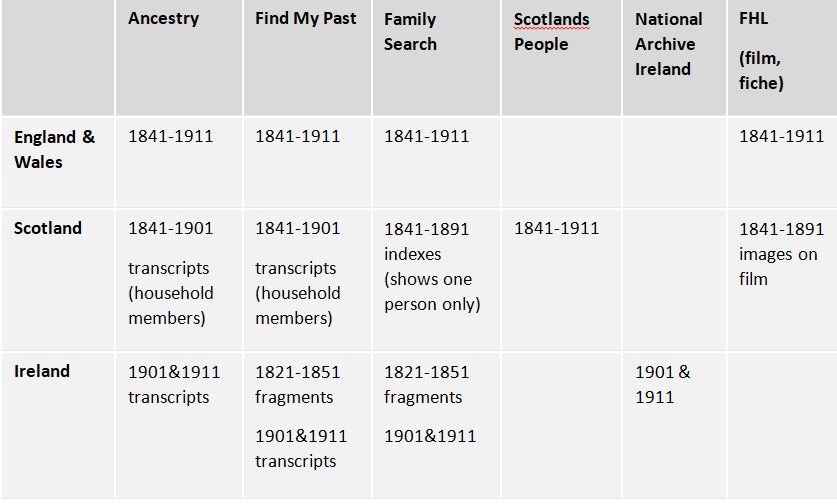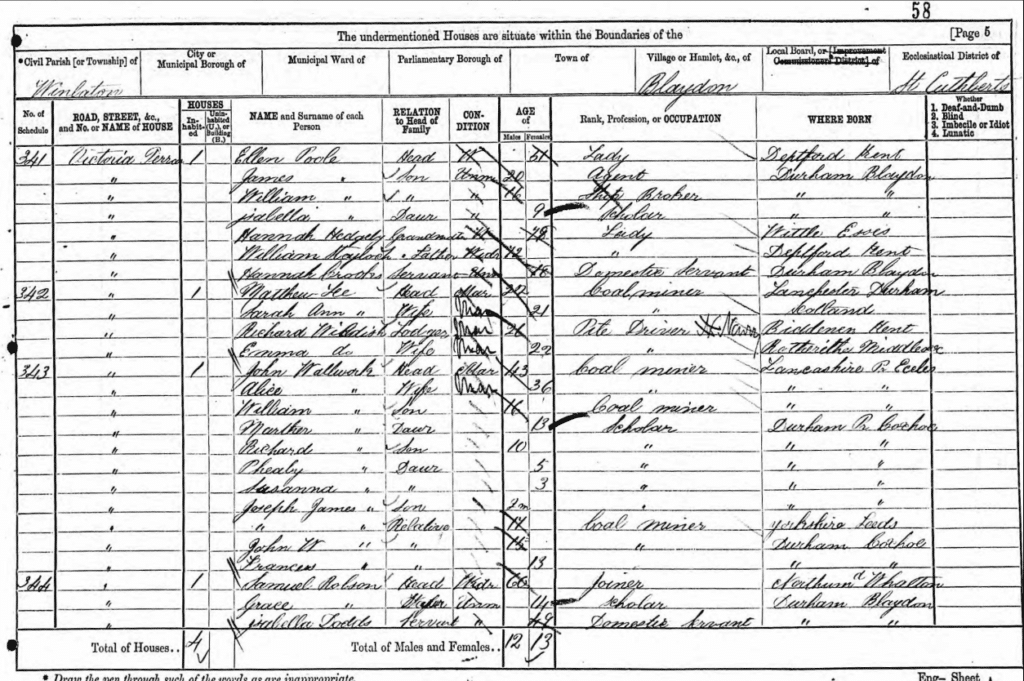Census Records for England, Ireland, Scotland and Wales
 21
21Oct

Census records are one of the finest sources for tracing mid-19th century to early 20th century families in the British Isles. In addition to pinpointing where a family lived at a particular time, census records offer important evidence regarding a family’s members, relationships, life events, residences, and occupations. The myriad of clues found in census records leads a researcher to other sources such as civil registration, church, probate, military and occupational records.
Census Record Availability
Census record availability depends on the country. Generally, every-name censuses began in the mid-19th century and are available through 1911.
England & Wales
- Indexes and images of all censuses between 1841 and 1911 are available on FamilySearch.org, Ancestry.com, FindMyPast.com, as well as a few other websites.
Scotland
- Indexes and images of all censuses between 1841 and 1911 are available on ScotlandsPeople.gov.uk.
- Indexes/transcriptions are available for censuses between 1841 and 1901 on Ancestry.com, and FindMyPast.com.
- Indexes/transcriptions are available for censuses between 1841 and 1891 on FamilySearch.org.
- Images of all censuses between 1841 and 1891 are available on microfilm at the Family History Library.
Ireland
- The 1901 and 1911 censuses are complete. Indexes and transcripts for both censuses are available on Ancestry.com and FindMyPast.com. Indexes and images for both censuses are available on census.nationalarchives.ie and FamilySearch.org.
- Records for censuses between 1861 and 1891 were destroyed.
- Fragments exist for the partially destroyed censuses between 1821 and 1851; availability depends on the area. Fragments of the 1821-1851 censuses are available on census.nationalarchives.ie, FamilySearch.org, and FindMyPast.com.
- Census substitutes include:
- Householders Index
- Tithe Applotment, 1823-1837. Land-based tax assessments on occupiers and owners who paid taxes to the Church of Ireland
- Griffith’s Valuation, 1848-1862. Replaced the Tithe Applotment records; taxes paid to the Irish government
- Old Age Pension Records. Pensions began in 1908. Applicants were required to provide proof of their age. To do so, they could use extracts from the 1841 and 1851 censuses.
- Householders Index

Census Record Content
The typical census record will provide a person’s name, age, gender, marital status, relationship to the head of household, occupation, birthplace, and where the person is living. The 1911 census also includes the number of years a woman has been married to her current husband, the number of children she bore, and the number of children still alive. The Ireland 1851 census also lists household members who died since the last census. The Ireland 1901 census includes a person’s religion.
The 1841 census for England, Wales, and Scotland, is different from other years in several important ways:
- Persons younger than 15 are usually listed by their exact age but the ages of persons older than 15 are usually rounded down to a multiple of five
- Relationships are not specified
The place of birth is listed as “Y” or “N,” in response to a question asking if they were born in the county in which they now live.

Census Record Tips and Strategies
People were recorded wherever they spent the night. If they were visiting relatives, were at work (such as night watchmen or merchant marines), were in an institution (such as a hospital, jail, school, or workhouse), or were living with another family (such as servants or apprentices), they should have been enumerated in those places—not with their families in their regular household. Occasionally, people are listed twice—once where they spent the night and again in their usual abode. Sometimes people are not listed at all. If you do not find someone living with family members, do not assume he or she has died unless you can prove this was the case.
A wise strategy is to locate ancestors in every census in which they appear as you may find additional family members, extended family members, or different information. Names, ages and birth places do not always correlate perfectly between censuses. Ages, birth places or relationships might be incorrect on one or more censuses but correct on others. Names could be misspelled or inaccurate. It is not uncommon for children to be listed by their nicknames or by their middle names instead of the names used on their birth or christening record. Scottish women, especially widows, might be listed under their maiden names, not their married names.
Census records can be particularly valuable when tracing migratory families. The birth places of a family’s children will help track the family from place to place and provide clues where to look for their birth, baptism, marriage, death and burial records.
Always use caution when dealing with families who share the same or similar names and information, and live in the same area. Make certain you have the right family.
One final word of caution—do not assume the mother in the family is the mother of all, or any, of the children. This could be the father’s second marriage. Locate the children’s birth or christening records to determine the names of the biological parents.
